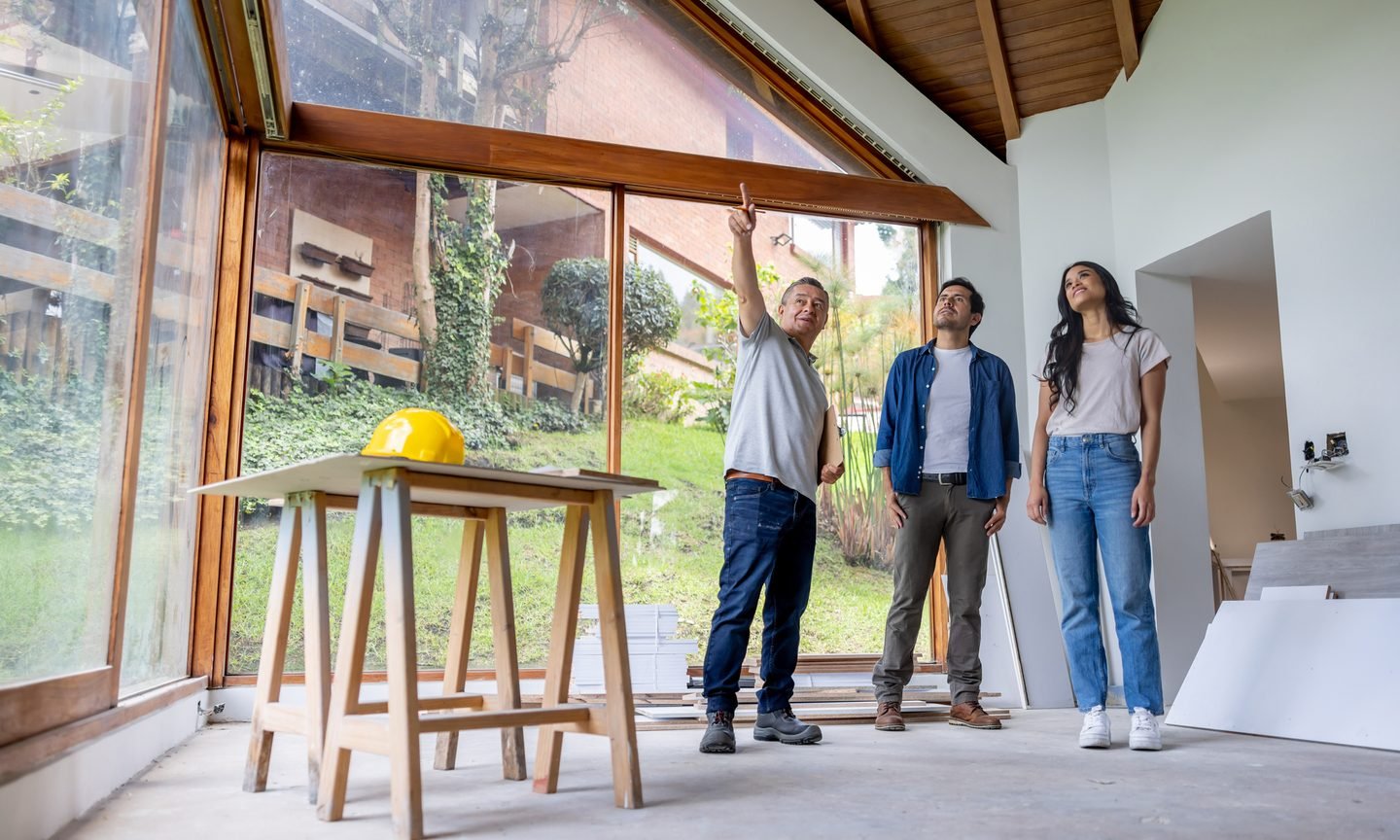The cost to renovate a house can range from $60 to $150 per square foot, depending on scope, size, location and labor. Many popular renovation projects cost under $20,000 for low-end, minor renovations to more than $100,000 for high-end, major renovation project.
High-end renovation costs
High-end renovations make use of the most upscale materials and popular trends. National average prices for major projects in this category can easily fall into the high five-figure or even six-figure range. Here are national average prices for popular high-end major renovations.
High-end bathroom renovation
-
Average renovation cost: $78,840.
-
Project overview: Expansion of existing bathroom within the house’s original footprint and relocation of all fixtures.
-
Highlights: New shower with body-spray features and a frameless glass enclosure, freestanding tub, high end faucets/fixtures, ceramic tiles, one-piece toilet, spot lighting, heated floors, cabinetry and extended HVAC.
Addition of an upscale bedroom suite
-
Average renovation cost: $339,513.
-
Project overview: Building a 32 x 20-foot bedroom suite with a full bathroom and sitting area. This addition is built over the home’s crawlspace.
-
Highlights: Custom bookcases, built-in storage, walk-in closet/dressing area, fireplace with custom mantle and stone hearth, walk-in shower with dual shower heads and frameless glass enclosure, separate soaker tub, one-piece toilet in partitioned area, two sinks in separate custom vanities and large mirrors, hospitality center with undercounter fridge, bar sink, microwave and custom cabinetry.
Major upscale kitchen renovation
-
Average renovation cost: $158,530.
-
Project overview: Replacing all appliances, countertops, cabinetry, fixtures, flooring and features in an existing 200-square-foot kitchen.
-
Highlights: Custom cabinets with built-in sliding shelves, built-in refrigerator, commercial-grade cooktop and vent hood, wall oven, undermount sink with designer faucets and water filtration system, built-in microwave, stone countertops, ceramic or glass tile backsplash, new lighting and new flooring.
Mid-range renovation costs
Mid-range projects may sometimes be as extensive as high-end renovations, but they use standard materials and fixtures rather than luxury ones. Here are national average costs for some popular mid-range renovations.
Major mid-range bathroom renovation
-
Average renovation cost: $25,251.
-
Project overview: Updating existing 5 x 7 bathroom by replacing existing fixtures, cabinetry, flooring and wall covering.
-
Highlights: Porcelain-on-steel tub with ceramic tile surround and single-lever shower control, standard white toilet, vanity with integral sink, recessed medicine cabinet with lighting vinyl wallpaper and ceramic tile floor.
Addition of a mid-range bedroom suite
-
Average renovation cost: $157,855.
-
Project overview: Building a 24 x 16 suite that includes a bedroom, bathroom and walk-in closet/dressing area. Suite is built over crawlspace.
-
Highlights: Ceramic tile shower and separate freestanding tub, solid-surface countertop with double-bowl sink vanity, carpeted bedroom floor, painting of all nontiled walls, ceiling and trim. Also includes overall and spot lighting and an exhaust fan.
Major mid-range kitchen renovation
-
Average renovation cost: $79,982.
-
Project overview: Replace most appliances, cabinetry, countertops, fixtures, flooring and features in an existing 200-square-foot kitchen.
-
Highlights: Energy-efficient range with vented hood, dishwasher, built-in microwave, dishwasher, custom lighting, garbage disposal, semicustom wood cabinets, 3 x 5-foot island, laminate countertops, stainless steel double sink with single-lever faucet, new flooring, painted walls, ceiling and trim.
Minor mid-range kitchen renovation
-
Average renovation cost: $27,492.
-
Project overview: Update 200-square-foot kitchen without tearing out cabinet boxes.
-
Highlights: Reface cabinets with Shaker-style drawer fronts, panels and hardware; install new laminate countertops, mid-priced sink and faucet. Replace existing appliances with energy-efficient stove, cooktop, and refrigerator. Install new flooring and paint walls, ceiling and trim.
Lower-cost renovation costs
If you’re considering a less extensive renovation, here’s a rough idea of what you might expect to spend on a few popular projects:
-
Bedroom renovation (paint, furniture, closet organization system, etc.): $1,500 to $5,500.
-
Living room renovation (paint, flooring, windows, lighting, etc.): $5,000 to $10,000.
-
Mold remediation: About $2,230.
-
Asbestos remediation: About $1,200 to $3,100.
-
Replacing appliances: $200 to $10,000 per appliance.
Remodeling an entire house costs about $60 to $150 per square foot, and costs are likely higher if you’re working on a historic home. Gutting a house all the way down to the studs typically costs about $100,000 to $650,000.
Accordingly, your total costs for a gut renovation might be:
-
A 1,400-square-foot house at $100 per square foot: $140,000.
-
A 2,700-square foot house at $100 per square foot: $270,000.
-
A 3,500-square-foot house at $150 per square foot: $525,000.
-
A 4,000-square-foot house at $150 per square foot: $600,000.
Can I get financing for a home repair or improvement?
Your contractor may offer some financing options (either through a partner or a payment plan), but there are other — any maybe better — financing options available.
Home equity loan or HELOC
Which financing option is best for me?
The best financing option for you will depend on how much money you need, when you need the money, what project you’re doing and how long you need to pay the money back. If it’s something that’ll add value to your home, a HELOC or home equity loan may be your best option because the value of your house could increase by more than the amount of the loan.
On the flip side, if it’s a less expensive repair, a credit card is probably your best option if you want to pay no interest or earn rewards. Personal loans can apply to both small and large repairs or renovations, and they may make sense if you don’t have much equity in your home.
Regardless of what you choose, make sure you compare interest rates, terms and fees with any financing options you’re considering. This will ensure you get the best deal.
|
Quicken Loans: NMLS#3030 |
||
|---|---|---|
|
NerdWallet rating
|
NerdWallet rating
|
NerdWallet rating
|
National / regionalNational |
National / regionalNational |
National / regionalNational |

